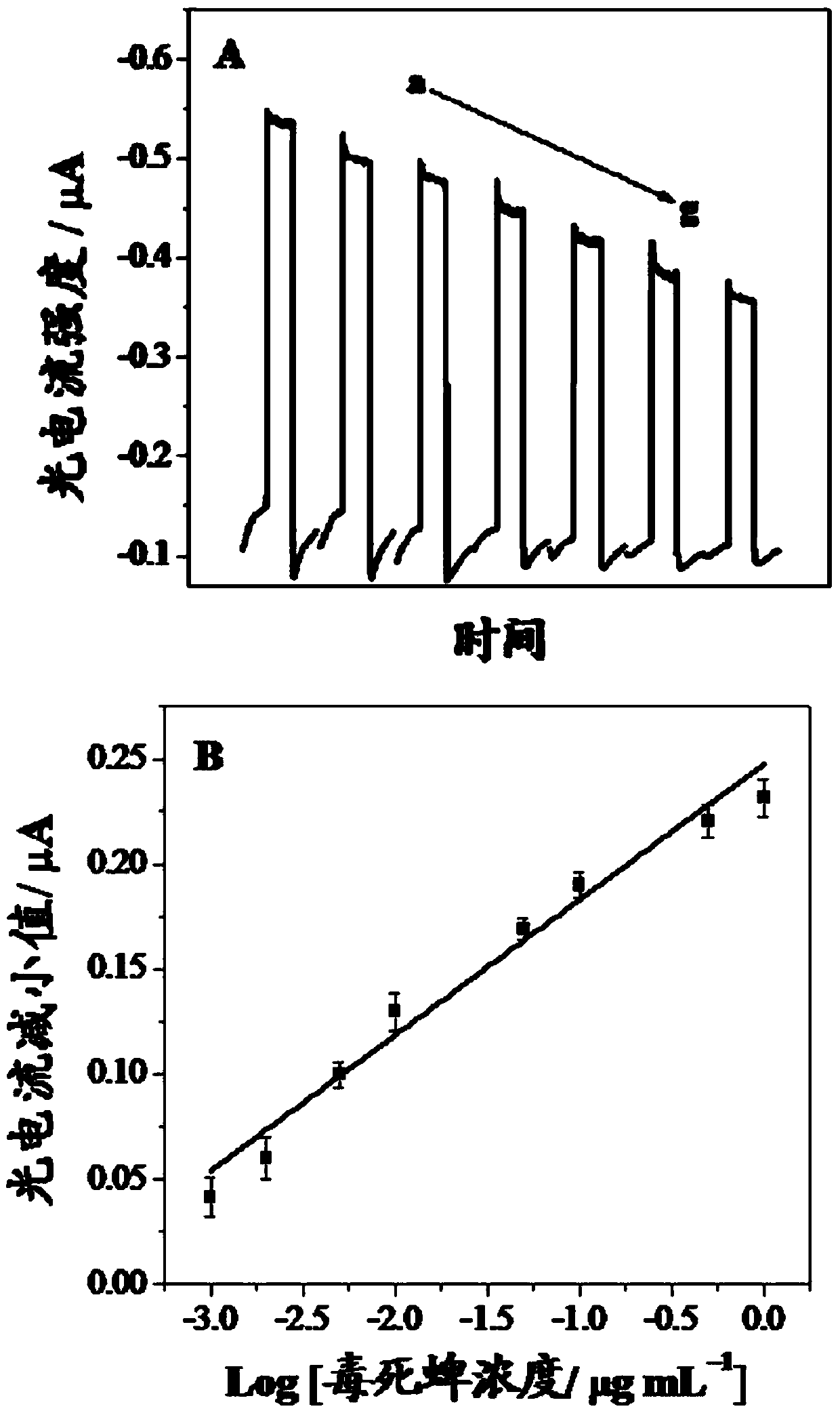Method for rapidly and sensitively detecting organophosphorus pesticide chlorpyrifos
A sensitive detection technology for organophosphorus pesticides, applied in the field of electrochemical detection, can solve the problems of expensive test environment, food safety, long analysis cycle, etc., achieve excellent photoelectrochemical performance and biocompatibility, short detection time, high sensitivity high effect
- Summary
- Abstract
- Description
- Claims
- Application Information
AI Technical Summary
Problems solved by technology
Method used
Image
Examples
Embodiment 1
[0025] Cd 0.5 Zn 0.5 Preparation of S-rGO nanocomposites:
[0026] Weigh 17 mg GO and add it into a round bottom flask containing 50 mL double-distilled water, ultrasonically disperse, so that GO is exfoliated into a single layer of graphene oxide, and a homogeneous brown suspension is obtained after 30 minutes; Slowly add 238 mg 0.02 MCd(NO 3 ) 2 and 297 mg 0.02 M Zn(NO 3 ) 2 solution and stirred at room temperature for 3 hours; then into the flask into H 2S gas for 1 hour until a yellow-green precipitate is produced, and the obtained precipitate is centrifuged, washed with twice distilled water and acetone for 3 times, and finally vacuum-dried at 45 °C for 24 hours to obtain Cd 0.5 Zn 0.5 S-rGO nanocomposite.
[0027] Modification of the photoelectrochemical sensing interface:
[0028] Take 1 mg Cd 0.5 Zn 0.5 S-rGO nanocomposites were ultrasonically dispersed in secondary water to form 2 mgmL ?1 suspension, the 6 mu L The suspension is drop-coated o...
PUM
 Login to View More
Login to View More Abstract
Description
Claims
Application Information
 Login to View More
Login to View More - R&D
- Intellectual Property
- Life Sciences
- Materials
- Tech Scout
- Unparalleled Data Quality
- Higher Quality Content
- 60% Fewer Hallucinations
Browse by: Latest US Patents, China's latest patents, Technical Efficacy Thesaurus, Application Domain, Technology Topic, Popular Technical Reports.
© 2025 PatSnap. All rights reserved.Legal|Privacy policy|Modern Slavery Act Transparency Statement|Sitemap|About US| Contact US: help@patsnap.com

